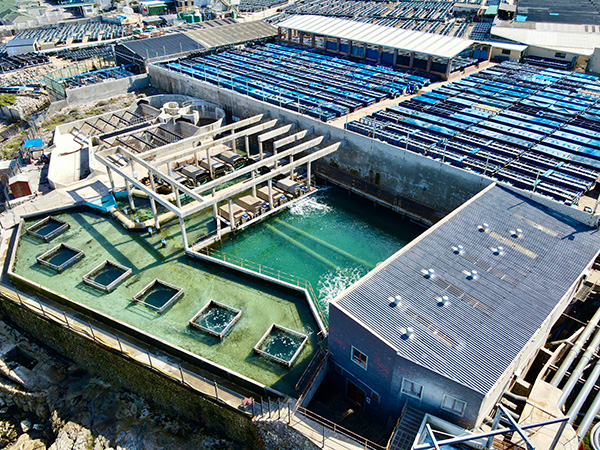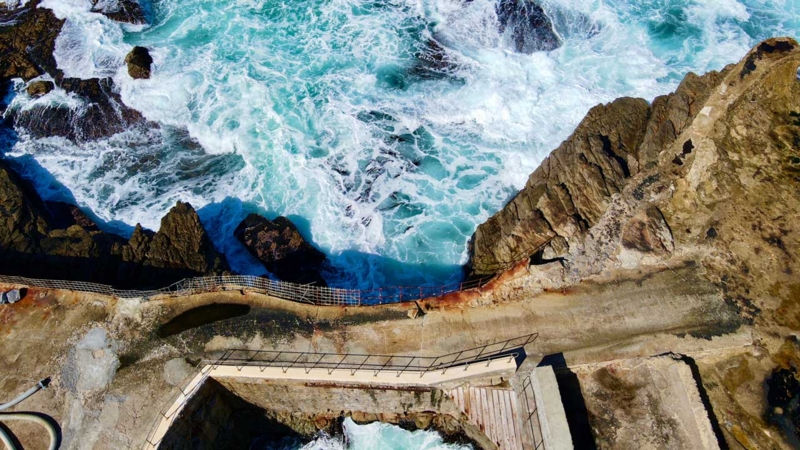Live Data Protects Abalone from Harmful Algal Blooms
Published on by Marcus Miller, Digital Marketing Manager at In-Situ in Case Studies
Overview
The sudden onset of harmful algal blooms (HABs) in 2017 and 2019 motivated South African abalone operation Abagold to invest in continuous monitoring technology for real-time updates on coastal water quality, enabling decisive action to protect stock health.
Challenge
In 2017, a red tide swept through Walker Bay, South Africa. Abagold, an abalone farm based in the coastal town of Hermanus, lost 30 percent of its animals. Abalone are slow growing creatures, and it took years for stock to recover to previous levels.
Abagold’s facilities rely on a flow-through system to support the in-tank growth of their abalone. This particular species, Haliotis Midae, traditionally grew off the coast of South Africa before poaching damaged local populations, so Abagold recreates the animals’ natural habitat by pumping water from Walker Bay into its tanks through a central intake point. The size of the operation makes it difficult to treat the large volume of bay water coming in, so it’s crucial to monitor water quality to make sure it’s safe to use.
By pumping water from Walker Bay, Abagold recreates the abalone’s natural habitat in their tanks.
Abagold had just replenished its stock after the 2017 red tide when another HAB hit in 2019. Since 2017, the company had made a large investment to protect the farm from such events, and could now close the intake point and temporarily run their operation as a recirculating aquaculture system (RAS) when conditions in Walker Bay posed risks to the abalone. These improvements led to almost zero mortalities in 2019, however, staff still relied on grab samples to determine whether to shut off the pumps, and the sampling process took time to complete.
Sarah Halse had just started at Abagold as Research Manager when the 2019 bloom occurred.
“It was a bit of a baptism by fire,” she recalls of her first few weeks. The labor-intensive grab sample process had Halse and others rushing across the large facility to collect and transport samples from the intake point back to the lab for analysis.
After traveling from intake to lab, staff then strained the sample through several filters before counting out phytoplankton by hand. “That can take anywhere from half an hour to an hour, depending on how many samples are in there and how many cells you’ve got to count,” Halse says. “So, it was a very slow process. It didn’t allow for quick decision making.”
Solution
While Halse and Abagold staff were able to prevent a repeat of the 2017 losses, it took considerable time, effort and resources. Real-time data would not only provide better protection for Abagold’s animals, it would also save staff time and energy when a bloom occurred.
Vic Cruger of SME Monitoring suggested In-Situ equipment for Abagold’s facility. Halse tested probes from several manufacturers before installing an Aqua TROLL 500 at Abagold’s intake point in 2022. The sonde monitors temperature, chlorophyll a and BGA-PE, sending readings to Abagold’s data management system every five minutes via telemetry.
Halse and others can watch the data live and receive alerts when parameters exceed certain levels. “This live feed is critical for our operations and being able to make decisions. When we have the ability to monitor [the intake] we can switch the intake off quickly,” says Halse, “and that’s a lot less impact on the animals.”
Setting alarms based on the data means the abalone are no longer vulnerable to changes in water quality that occur after working hours. “We wanted to be able to look at our data at two in the morning,” Halse says.
Abagold also has satellites that survey ocean conditions from above, but the satellites’ effectiveness is limited by weather patterns. “In the summer periods we tend to get quite cloudy days,” Halse reports, “and then your satellite is useless, because if it goes over once a day, and it happens to be cloudy, then you don’t get any measurements. The probe gives us live data and consistent data.”
With the Aqua TROLL installed long-term, Abagold can use the satellite images to supplement the data points coming in from the intake.
In addition to using data from the Aqua TROLL 500 in its own operations, Abagold also collaborates with the University of Bedfordshire, sending water quality data from the Aqua TROLL to researchers studying machine learning for technical applications in aquaculture practices. Cruger reports that the ease of integrating In-Situ equipment with other manufacturers’ telemetry and data management systems was one of its main draws. “The value of the In-Situ probe is the different protocols. You can have Modbus or you can have SDI-12 and that gives us a lot of flexibility on the equipment you use to transmit the data,” he says.
The flexible communication protocols make it easy to share data with the university and other stakeholders.
Results
Halse says the live data has been...
READ MORE
Taxonomy
- Water Quality
- Algae
- Water Monitoring
- Water Quality Monitoring
- Algae Treatment
- Water quality
- Research water quality
- Water Quality Research
- Algal Blooms
- Potable water tank inspections, cleaning and maintenance
- Water Quality Monitoring Sensor
- Hazardous Algae Blooms
- Water Quality Modelling
- Water Quality

